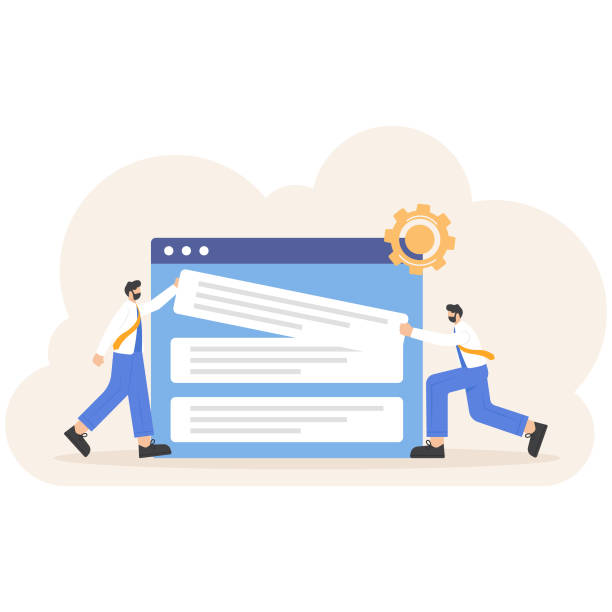Introduction to On-Page SEO and its Importance

In today’s highly competitive web world, an online presence is not just about having a website; its visibility is of paramount importance.
“On-Page SEO”, is a set of techniques and strategies implemented within your website to improve its ranking in #search engine results.
This includes optimizing content, site structure, and HTML codes.
The main goal of #On-Page SEO, is to provide clear signals to #search engine crawlers to help them better understand your website and recognize its value.
The importance of On-Page SEO goes beyond achieving rankings; this process directly impacts user experience and ultimately, your conversion rate.
A website with an optimized internal structure is not only more understandable for search engines, but also easier for users to navigate and find information within.
This comprehensive and user-centric approach lays the foundation for a successful SEO strategy.
Without attention to On-Page SEO, even the best content may never reach its audience, because search engines will not be able to properly index and understand it.
This is especially crucial for businesses looking to increase visibility and attract potential customers through organic search.
Are you aware that a weak corporate website loses you many opportunities daily? Solve this problem forever with professional corporate website design by Rasavab!
✅ Create a powerful and reliable image of your brand
✅ Attract targeted new customers and increase sales
⚡ [Get free website design consultation]
Keyword Research; The Cornerstone of Successful On-Page SEO
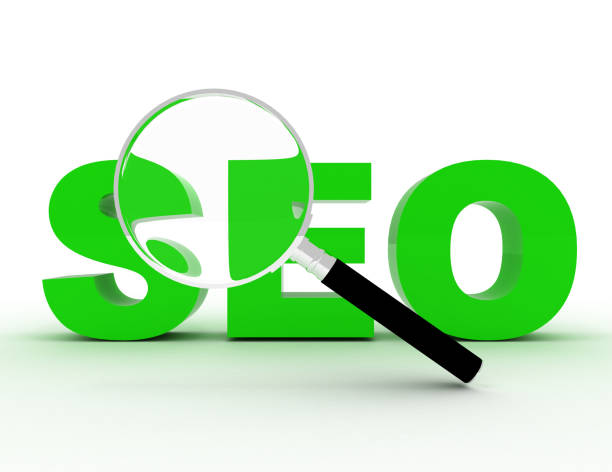
Keyword research is the first and most vital step in any On-Page SEO strategy.
This process involves finding the words and phrases your target audience uses to search for information, products or services related to your business.
Choosing the right keywords not only drives more traffic to your site, but also ensures that the incoming traffic is relevant and high-quality.
To conduct effective keyword research, you need to consider search volume, competition, and user search intent.
Tools like Google Keyword Planner, Ahrefs, and Semrush can help you in this process.
In addition to high-volume keywords, also consider Long-Tail Keywords; although these keywords have lower search volume, they usually have lower competition and result in higher conversion rates, because they more precisely define the user’s intent.
Understanding user’s search intent is extremely important at this stage.
Is the user looking for information (Informational), intending to buy (Transactional), or wanting to go to a specific website (Navigational)? Aligning your content with search intent increases your chances of ranking higher and attracting the right audience.
This part of On-Page SEO helps you create a roadmap for producing valuable and targeted content.
Optimizing Key On-Page Elements; Title and Meta Descriptions
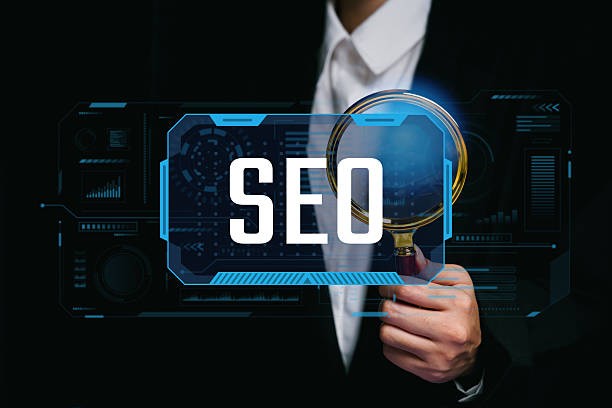
Optimizing On-Page elements forms the core of On-Page SEO.
Among these, Title Tag and Meta Description are of paramount importance.
The page title is the first thing users see in search results and directly plays a role in their decision to click or not.
The title should include the main keyword of the page, be precise and engaging, and be between 50 to 60 characters long to be fully displayed.
Meta descriptions, although not directly affecting ranking, act as a “mini-advertisement” for your page and play a significant role in increasing the click-through rate (CTR).
These descriptions should provide an engaging summary of the page content, include relevant keywords and encourage users to click, while being between 150 to 160 characters long.
Beyond these two elements, optimizing heading tags (H1, H2, H3, etc.) for structuring content and helping search engines understand the information hierarchy, is essential.
H1 should contain the main keyword and each page should only have one H1.
Also, proper use of Schema Markup tags can also help search engines better understand your content and display it in Rich Snippets.
This not only helps with search engine optimization but also improves user experience, which is why it is considered an important aspect of On-Page SEO.
In the following, a table of best practices for optimizing titles and meta descriptions is provided:
| Element | Description | Key On-Page SEO Tips |
|---|---|---|
| Title Tag | The first thing seen in search results. |
|
| Meta Description | A short summary of the page content. |
|
| Header Tags (H1-H6) | Structuring content and highlighting important sections. |
|
The Importance of Content Quality and Relevance in On-Page SEO
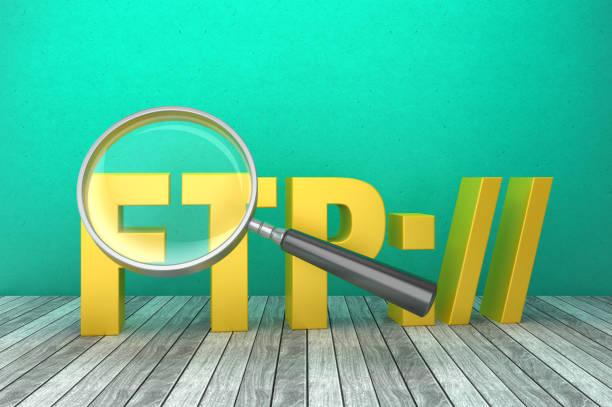
Content is king; this phrase remains true in the world of SEO, especially in the context of On-Page SEO.
Content quality and its relevance to target keywords are among the most important factors for ranking in search engines.
Your content should be valuable, comprehensive, and unique and fully answer users’ needs and questions.
Merely stuffing pages with keywords using “keyword stuffing” not only doesn’t help SEO, but can lead to penalties from search engines.
Instead, keywords should be used naturally and within the appropriate context of the text.
Furthermore, your content should be up-to-date and accurate.
Outdated or incorrect information can harm your website’s credibility and negatively impact its ranking.
Search engines are increasingly focusing on user experience and audience satisfaction, so content that engages users, increases their dwell time, and reduces bounce rate sends positive signals to search engines.
This also includes using high-quality images and videos, infographics, and even charts to improve content understanding and visual appeal.
Finally, content written by experts in the field and approaching the topic from a specialized and analytical perspective can gain the trust of search engines and users alike, being recognized as an authoritative reference.
This is a critical aspect of any On-Page SEO strategy that should not be overlooked.
Are you disappointed with the low conversion rate of your online store?
Rasavab, with its professional e-commerce website design, is your definitive solution!
✅ Increase your sales and revenue
✅ Unparalleled user experience for your customers
⚡ Get a free consultation now!
Internal Linking Strategy; A Network of Connections

Internal linking is another pillar of On-Page SEO that is often overlooked.
Internal links are hyperlinks that connect one page of your website to another page within the same website.
These links serve several important purposes: Firstly, they help search engines better understand your site’s structure and discover new pages, and crawlers can transfer link equity across your site.
Secondly, internal links improve user experience, because they allow users to easily navigate between related pages and discover more information.
Using relevant and descriptive Anchor Texts for internal links is crucial.
The anchor text should clearly indicate what the destination page is about.
For example, if you are linking to a page about “gaming laptops,” the anchor text should not be “click here,” but rather a phrase like “gaming laptop buying guide” or “best gaming laptops 2024.”
Also, ensure that your important and high-traffic pages receive enough links from other pages on the site.
This “SEO juice” or “Link Juice” helps them rank better in search results.
A hierarchical and logical internal link structure that leads from the homepage to categories and then to product pages or articles can have a positive impact on your On-Page SEO.
This structured approach to internal linking shows search engines which of your pages are more important and helps them correctly assess the value of each page.
This is a specialized and guiding strategy for increasing your website’s visibility.
Optimizing Images and Multimedia Files for SEO
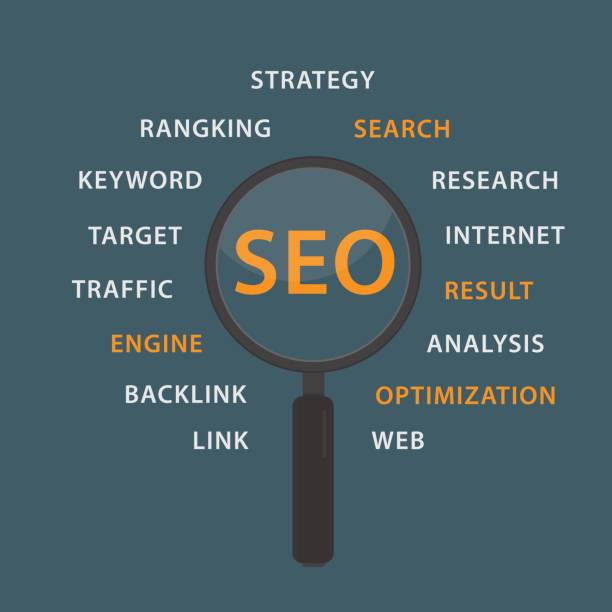
Images and multimedia files play a vital role in the appeal and understanding of website content, but if not properly optimized, they can harm site loading speed and negatively impact On-Page SEO.
Image optimization involves several key steps.
First of all, the file size of images should be as small as possible, without significantly reducing their visual quality.
New formats like WebP can help reduce file sizes.
Second, naming images with relevant and descriptive keywords is very important; instead of “image123.jpg,” use names like “on-page-seo-introduction.jpg.”
Third, and perhaps most importantly, is the use of the Alt tag (Alternate Text) for each image.
The Alt tag provides a brief description of the image content and is displayed when the image fails to load.
Also, this tag helps search engines understand the image content and provides necessary information for visually impaired users who use screen readers.
The Alt tag should include relevant keywords but avoid keyword stuffing.
In addition to images, video files should also be optimized.
This includes using video hosting platforms like YouTube or Vimeo to reduce the load on your servers, and providing subtitle and transcript files for improved accessibility and SEO.
These optimizations help search engines better understand your multimedia content and display it in image or video search results, which is a vital part of comprehensive On-Page SEO.
Page Load Speed and Mobile Responsiveness; Vital SEO Factors
![]()
In today’s age, where users expect to receive information quickly, page load speed and mobile responsiveness are two vital and undeniable factors in On-Page SEO.
Search engines, especially Google, are increasingly emphasizing these two factors for website ranking.
A slow website provides a poor user experience, which leads to increased bounce rates and reduced user dwell time; signals that search engines consider negative.
Tools like Google PageSpeed Insights and GTmetrix can help you in identifying loading speed issues and provide solutions such as image compression, browser caching, and reducing HTTP requests.
Also, given that a significant portion of searches are done via mobile devices, having a responsive website that displays well on all types of devices, is absolutely essential.
Google uses a Mobile-First Indexing approach, meaning it considers the mobile version of your site as the primary version for indexing and ranking.
Lack of mobile compatibility can severely impact your site’s visibility in search results.
Ensuring that touch elements (like buttons and links) are large enough and spaced appropriately, font sizes are readable, and site navigation on mobile is easy, are among the important points in this section of On-Page SEO.
These issues are directly related to user experience, and search engines reward sites that provide a better user experience.
Ultimately, paying attention to these technical factors not only helps improve your ranking, but also increases user satisfaction.
Below, a table of useful tools for checking your website’s speed and mobile compatibility is provided:
| Tool | Main Use | Key On-Page SEO Tips |
|---|---|---|
| Google PageSpeed Insights | Analyzes page load speed for desktop and mobile. |
|
| GTmetrix | Analyzes site performance and speed in detail. |
|
| Google Mobile-Friendly Test | Checks website compatibility with mobile devices. |
|
| Google Search Console | Performance, indexing, and mobile-related issue reports. |
|
User Experience (UX) and Its Impact on On-Page SEO

User experience (UX) is no longer just a secondary factor; it has become one of the most important ranking factors in On-Page SEO.
Search engines are increasingly focused on how websites meet users’ needs and expectations.
A positive user experience leads to longer dwell time on the site (Dwell Time), reduced bounce rate (Bounce Rate), and increased engagement (Engagement).
These signals tell search engines that your content is valuable and relevant, thus improving your ranking.
UX elements include appealing visual design, easy navigation, readable and organized content, and fast loading speed.
If users cannot easily find what they are looking for, or if your site is difficult to navigate, they will quickly leave.
The question is: How can we optimize user experience in a way that also improves On-Page SEO? The answer lies in the synergy of these two concepts.
For example, using a Responsive Design that displays well on all devices, improves both UX and aligns with Google’s Mobile-First Indexing.
Logical content organization using heading tags, short paragraphs, and sufficient white space, increases readability and helps users quickly find the information they need.
Also, having a strong internal search on the website, improving the functionality of filtering and sorting for e-commerce sites, and using simple and user-friendly forms, all contribute to improving UX and consequently On-Page SEO.
This is an analytical and thought-provoking view of how SEO and UX can work hand-in-hand towards success.
Research shows 80% of customers trust companies with a professional website more. Does your current site gain this trust?
With Rasavab’s corporate website design services, solve the problem of customer distrust and a weak online image forever!
✅ Create a professional image and increase customer trust
✅ Attract more sales leads and grow your business
⚡ Get a free consultation!
Monitoring and Analysis; Evaluating On-Page SEO Performance

After implementing On-Page SEO strategies, the next crucial step is monitoring and analyzing their performance.
Without careful tracking, you cannot understand which strategies have been effective and which need optimization.
Tools like Google Analytics and Google Search Console are invaluable at this stage.
Google Analytics allows you to track website traffic, user behavior (such as bounce rate, dwell time on page, pages visited), and traffic sources.
By examining this data, you can identify patterns that indicate the effectiveness or ineffectiveness of your On-Page SEO changes.
For example, if the bounce rate on a particular page is high, it may indicate irrelevant content or a poor user experience that needs review.
Google Search Console also provides valuable information about how Google interacts with your website.
This tool shows you for which keywords your site has appeared, how many clicks it has received, and what crawling or indexing errors exist.
The “Performance” section in Search Console helps you identify high-potential keywords and optimize well-ranking pages for further improvement.
Monitoring keyword rankings, evaluating competitors, and tracking Google algorithm updates are also part of this continuous process.
Remember that SEO is not a static process and requires continuous analysis and optimization to maintain and improve desired results.
This section is a specialized guide for continuously monitoring the success of your On-Page SEO.
Common On-Page SEO Mistakes and How to Avoid Them

Despite the importance of On-Page SEO, many websites make common mistakes that can nullify their efforts.
Recognizing these mistakes and avoiding them is essential for SEO success.
One of the most common errors is “Keyword Stuffing”.
Instead of focusing on content quality and relevance, some webmasters try to trick search engines by excessively repeating keywords, which has the opposite effect and harms site ranking.
The focus should be on natural and meaningful use of keywords.
Another mistake is neglecting loading speed and mobile compatibility.
As previously mentioned, these two factors are crucial, and ignoring them can severely impact your ranking.
Also, failing to optimize images and their Alt tags is a common error that misses many opportunities for traffic from image search.
Another mistake is having duplicate or very similar content.
Search engines get confused when dealing with duplicate content and cannot decide which version to rank.
This can lead to a reduced ranking or even penalties.
To avoid this problem, you can use the Canonical tag to specify the original version of the content or rewrite and merge duplicate content.
The absence or an outdated XML Sitemap can also cause search engines to miss some of your important pages.
Finally, neglecting user experience (UX) is also a grave error.
If users are not satisfied with your site, search engines will gradually stop recognizing it.
Avoiding these mistakes and focusing on comprehensive and user-centric approaches in On-Page SEO, provides a more reliable path to success in the competitive world of search engines.
This is an entertaining and analytical guide to avoiding common problems.
Frequently Asked Questions
| Question | Answer |
|---|---|
| What is On-Page SEO? | It refers to a set of actions performed within a website to improve its ranking in search engines. |
| Why is On-Page SEO important? | Because it helps search engines better understand your site’s content and structure and improves user experience. |
| What are the most important On-Page SEO elements? | Title and meta descriptions, keywords, URL structure, quality content, image optimization, internal linking, and site speed. |
| How to optimize Title Tag and Meta Description? | The title should include the main keyword and be engaging, and the meta description should be an enticing summary of the content with relevant keywords. |
| What is the role of keywords in On-Page SEO? | Keywords help search engines understand what the page content is about and should be used naturally and intelligently within the text. |
| How is image optimization done for On-Page SEO? | By compressing size, using descriptive file names, and filling the Alt tag with relevant descriptions and keywords. |
| What is Internal Linking and what is its use? | It is connecting different pages of a site to each other. This helps distribute page authority and improves search engine crawling. |
| What is the importance of site loading speed in On-Page SEO? | High speed improves user experience and is an important ranking factor for search engines like Google. |
| What is the impact of site Mobile-Friendliness on On-Page SEO? | Given the increase in mobile users, responsiveness is essential for providing a good user experience on all devices and for Google’s mobile-first indexing priority. |
| What are the important content-related factors in On-Page SEO? | Originality, quality, comprehensiveness, readability, proper use of headings (H1, H2,…), and regular content updates. |
And other services of Rasa Web Advertising Agency in the field of advertising
Smart Digital Branding: An effective tool for digital branding with the help of intelligent data analysis.
Smart Link Building: A new service to increase customer behavior analysis through precise audience targeting.
Smart Conversion Rate Optimization: An effective tool to improve SEO ranking by optimizing key pages.
Smart Sales Automation: A specialized service for digital branding growth based on precise audience targeting.
Smart Social Media: Revolutionize customer behavior analysis with personalized user experience.
And over a hundred other services in internet advertising, advertising consultation and organizational solutions
Internet Advertising | Advertising Strategy | Advertorial
Sources
On-Page SEO Training
Complete Guide to On-Page SEO
What is On-Page SEO?
Important On-Page SEO Tips for Beginners
? Are you ready to boost your business in the digital world? Rasavab Aafarin Digital Marketing Agency, with expertise in e-commerce website design, SEO, and campaign management, is your reliable partner for reaching the pinnacles of online success. With a strategic and innovative approach, we will create a powerful and profitable online presence for you.
📍 Tehran, Mirdamad Street, next to Bank Markazi, Kazerun South Alley, Ramin Alley, No. 6



